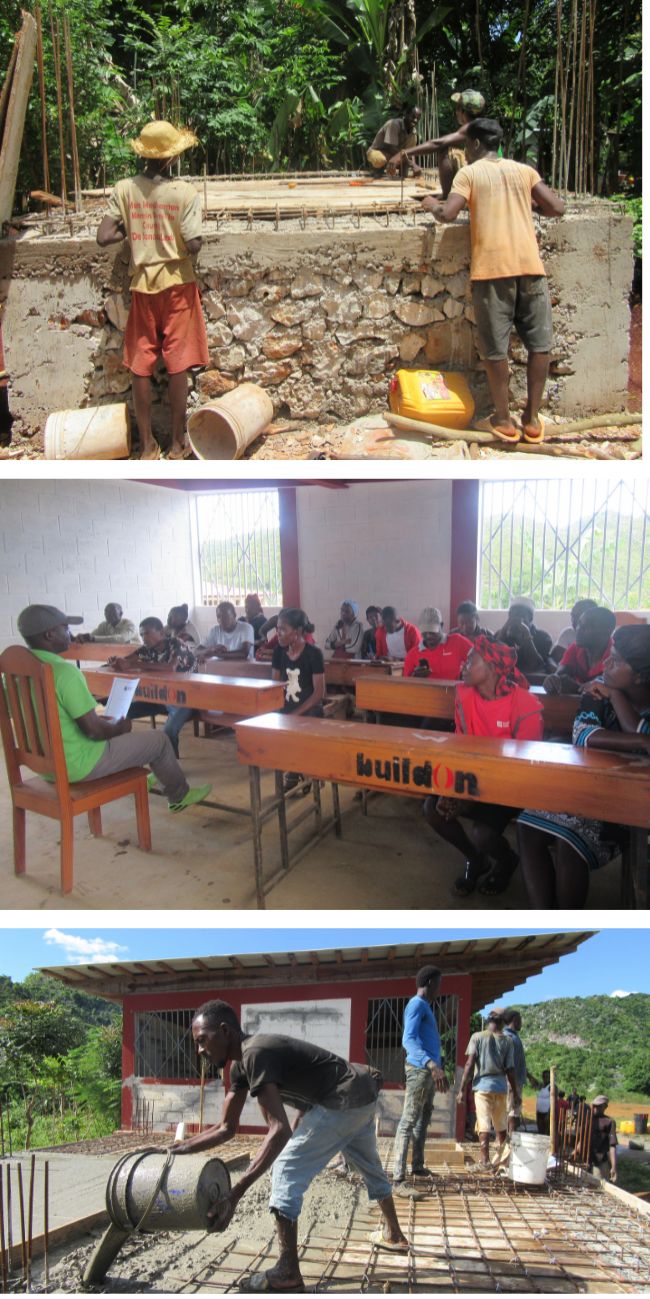Stories of Change

Top and bottom: reconstructing communities and homes, Middle: Educators attending mental health training
Reflections of hope and resilience in Haiti
Over the past few years, the people in Haiti have continued to teach us a lesson of hope for a better future, despite the daunting socio-political challenges that the country faces. Amidst uncertainty and instability, our team in Haiti is helping our neighbors care for and strengthen their minds through mental health support.
“The crisis has a big impact on all social and economic activities of the population. It has led to roadblocks, protests, plundering and a lot of violence,” said Falange Chamblin, a psychologist and member of the CWS mental health team in Haiti. Her colleague, psychologist Sulfise Erasmé, added that, “not only was the economy affected, but so was mental health. Some people became more aggressive and violent in how they reacted to their children’s behavior. Many experienced stress, concern, panic, frustration, anger.”
After the earthquake in 2010 and Hurricane Matthew in 2016, CWS helped families and communities build or rebuild houses, public schools and cisterns, as well as develop water systems, mobile clinics and community-based psychosocial support.
When Falange and Sulfise joined the CWS response and long-term recovery team in the commune of Pestel, Grand Anse department, in April 2022, they noted that previous natural disasters were still impacting people’s lives. One participant said, “whenever it is windy, that causes problems for me because it’s as if I’m seeing the hurricane again.” (They were referring to Hurricane Matthew in 2016.) Another said, “when I hear a big noise, it disturbs me, makes me feel afraid and makes me want to run away.” (This was referring to the 2021 earthquake.)
The CWS team also worked with local school directors to develop psychosocial support training for teachers and support sessions for students. Since the beginning of the Earthquake response as of December 2022, a total of 112 teachers and community leaders and 963 students have participated in the activities, which included intensive training for teachers and community leaders, group and individual support sessions, and therapy through dance and play.
The training results are promising, and the participants are noticing a shift in their feelings and moods. Sulfise commented, “On their faces, we could see some signs of joy and hope because they found some techniques that could help them cope with these difficulties.”
On the other hand, as some schools are opening again, the children and parents are returning to their routines. “Children can reconnect with their friends; that makes them feel good. They are happy. And I’m happy too,” says Falange. She stated, “it is not the service provided to a person that has the most value for us. It is the person themselves.”
